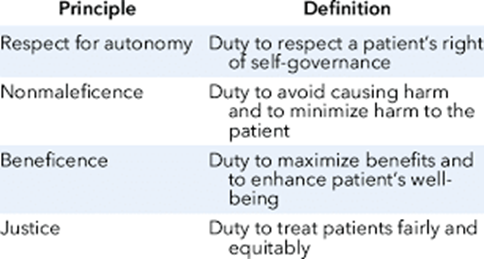A nurse is admitting a client who is 1 week postpartum and reports excessive vaginal bleeding. The nurse speaks a different language than the client. The client's partner and 10-year-old child are accompanying her. Which of the following actions should the nurse take to gather the client's admission data?
Allow the client's partner to translate.
Have the client's child translate.
Ask a nursing student who speaks the same language as the client to translate.
Request a female interpreter through the facility.
The Correct Answer is D
Choice A reason:
Allow the client's partner to translate. While the partner may be well-intentioned, using a family member or friend as an ad-hoc interpreter can compromise the confidentiality of the information and may not accurately convey the client's medical concerns.
Choice B reason:
Have the client's child translate. Relying on a child to translate sensitive medical information is inappropriate, as it may burden the child and may lead to potential misunderstandings or omissions in communication.
Choice C reason:
Ask a nursing student who speaks the same language as the client to translate. Although a nursing student who speaks the same language as the client may be able to assist, using a professional interpreter is the preferred option. Professional interpreters have specific training in medical terminology and communication, ensuring the most accurate and effective exchange of information.
Choice D reason:
Using a professional interpreter is essential in situations where the healthcare provider and the client do not speak the same language. It ensures accurate communication, maintains confidentiality, and prevents misunderstandings. In this scenario, the nurse should request an interpreter who is proficient in the client's language to assist with the admission process.
Nursing Test Bank
Naxlex Comprehensive Predictor Exams
Related Questions
Correct Answer is D
Explanation
A. Obesity is not a risk factor for osteoporosis. In fact, obesity may have a protective effect on bone density due to increased mechanical loading and higher levels of estrogen in adipose tissue.
B. Acromegaly is not a risk factor for osteoporosis. Acromegaly is a condition caused by excess growth hormone, which leads to increased bone formation and remodeling.
C. Estrogen replacement therapy is not a risk factor for osteoporosis. Estrogen replacement therapy can help prevent bone loss and reduce the risk of fractures in postmenopausal women with low estrogen levels.
D. Sedentary lifestyle is a risk factor for osteoporosis. Sedentary lifestyle reduces physical activity and muscle strength, which decreases bone stimulation and increases bone resorption.
Correct Answer is A
Explanation
A. Autonomy is the ethical principle that respects the right of clients to make their own decisions and choices regarding their health care. Informed consent is a process that ensures that clients are fully informed of the benefits, risks, alternatives, and consequences of a proposed treatment or procedure, and that they voluntarily agree to it.
B. Nonmaleficence is the ethical principle that obliges health care providers to do no harm to clients, either intentionally or unintentionally. Informed consent does not directly promote this principle, although it may help to prevent harm by disclosing potential risks and complications.
C. Justice is the ethical principle that requires fair and equal treatment of all clients, regardless of their personal characteristics, preferences, or values. Informed consent does not directly promote this principle, although it may help to ensure that clients are not coerced or manipulated into accepting a treatment or procedure that they do not want or need.
D. Fidelity is the ethical principle that requires health care providers to be faithful and loyal to their clients, and to honor their commitments and promises. Informed consent does not directly promote this principle, although it may help to establish trust and rapport between clients and providers.

Whether you are a student looking to ace your exams or a practicing nurse seeking to enhance your expertise , our nursing education contents will empower you with the confidence and competence to make a difference in the lives of patients and become a respected leader in the healthcare field.
Visit Naxlex, invest in your future and unlock endless possibilities with our unparalleled nursing education contents today
Report Wrong Answer on the Current Question
Do you disagree with the answer? If yes, what is your expected answer? Explain.
Kindly be descriptive with the issue you are facing.
